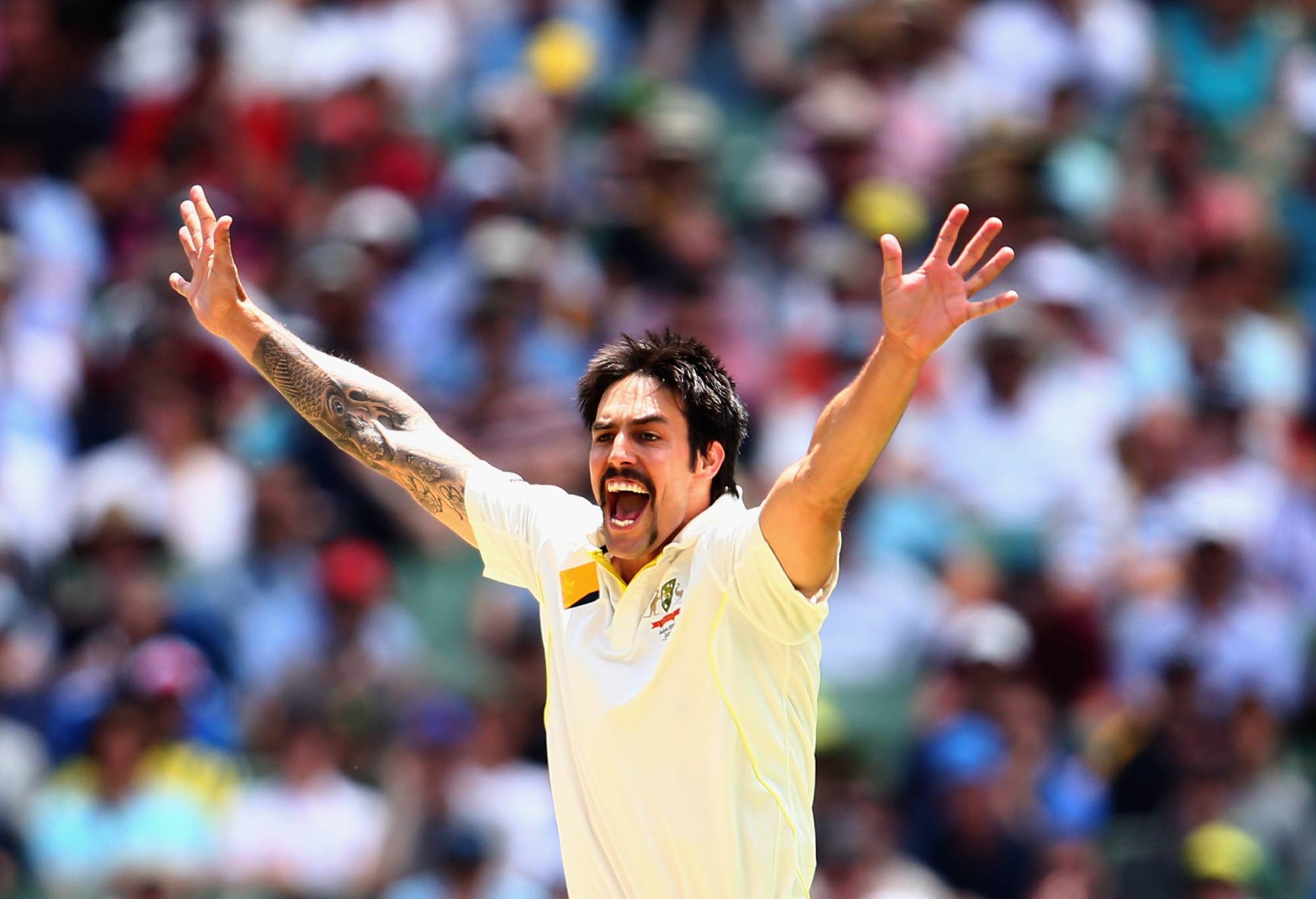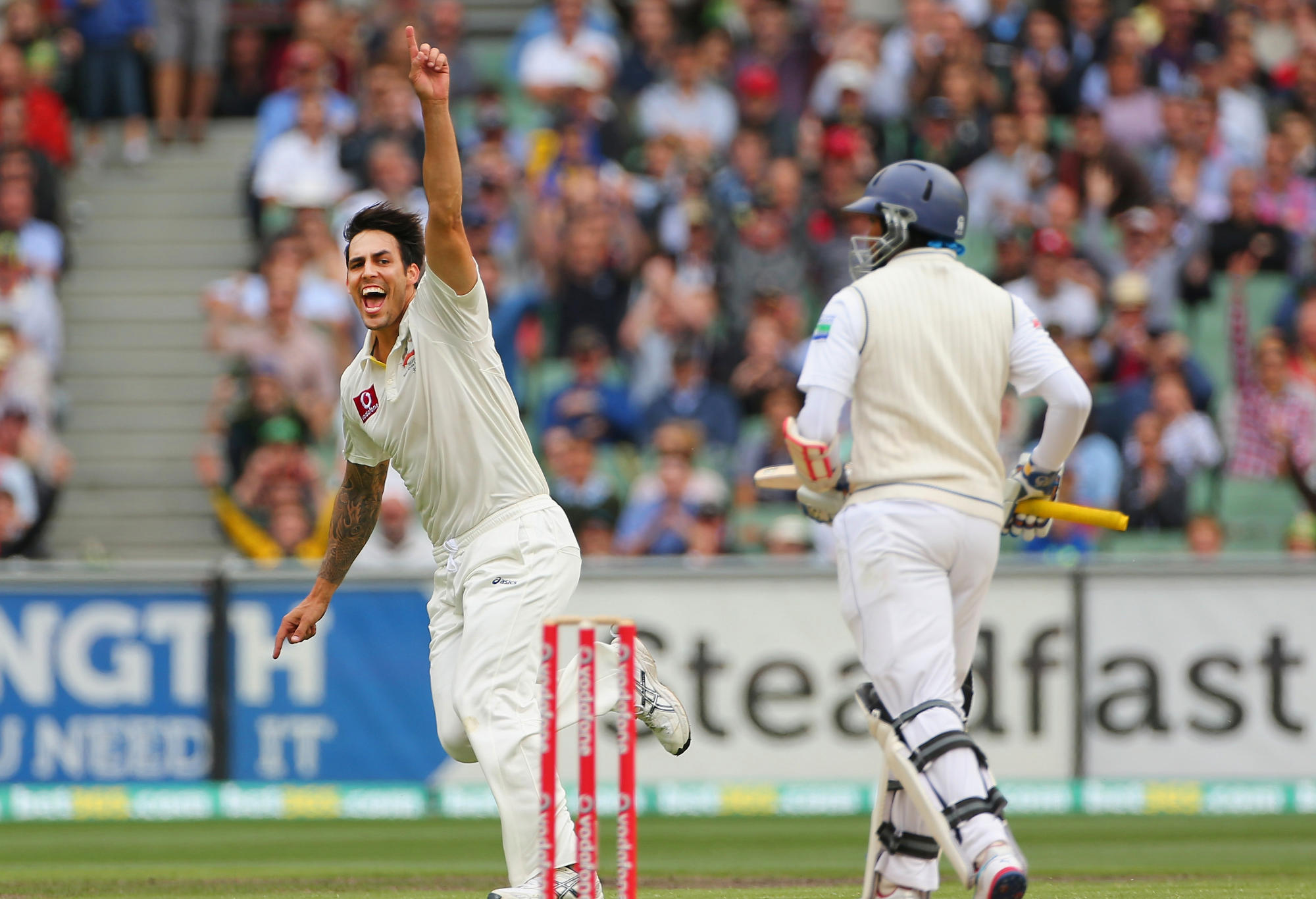Roar Rookie

We always bang on about batting partnerships. The need for them. How they can turn a Test. How they should bat. How the lack of decent partnerships will usually doom a team.
And there’s always talk about the best bowling partnerships of all time. You know them: Ambrose and Walsh, Waqar and Wasim, Lillie and Thommo, Donald and Pollock, Lindwall and Miller, Trueman and Statham.
Yes, I know it seems crazy to include English players in a list of elite bowlers. But Statham once held the world record for Test wickets with 252. Trueman broke his record two months later. So, it’s probably fair they get a mention.
But what about other bowling partnerships? The ones we thought could be anything, but never quite happened.
There’s plenty out there (Archer and Wood) and I’m sure you’ve got names popping into your head right now. For the record, Choppy’s top five picks are Pollock and Procter, Donald and Schultz, McDermott and Reid, Bishop and Patterson and McKenzie and Davidson. Beat that.
Just to clarify: these bowlers weren’t necessarily “partnerships”. That is, they didn’t always share the new ball. These are instances where they played in the same Test together. And as it happened, they played together in one Test.
Jeff Thomson and Alan Hurst: Nine wickets, win, v India at the Gabba 1977
Tigerbill wrote a great article which covers this Test and the crucial partnership between Thommo and Hurst which saw Australia crawl home by 17 runs – India’s missed opportunity at the Gabba 43 years ago
Colin Croft and Bernard Julien: Six wickets, draw, v Pakistan at Georgetown 1977
With his six-foot five frame and merciless demeanour, Croft was brutal in his 27-Test, five-year career. Overflowing with talent, this two was paired with Roberts and Garner in Croft’s third Test. After taking a 340-run lead into the third innings, Pakistan set the Windies 287 to win. The Windies were rattling along at one for 154 off 24.5 overs but ran out of time.
For the record, the 27-Test Club has some bowling attack. Joining Croft on 27 are Bruce Reid, Sydney Barnes, Ryan Harris, Bill Voce, Neil Hawke, Tiger O’Reilly, Mahmood Hussain, Wahab Riaz, Sreesanth, John Goddard and Roger Binny.
Ian Bishop and Eldine Baptiste: Ten wickets, win, v England at Antigua 1990
Medium-fast all-rounder Baptiste played 10 Tests: his first in 1983 with Holding, Marshall and Winston Davis. He then played eight Tests in 1984 and his final one in 1990 with Ambrose, Walsh and Bishop. Those are some handy bookends!
And the Windies won all ten Tests that Baptiste played in.
In his final Test, Baptiste’s only wicket was Allan Lamb as the Windies crushed the English minnows by an innings and 32 runs. The Windies quartet from Baptiste’s final Test would have played plenty more matches together had Baptiste been a few years younger.
Dion Nash and Heath Davis: Three wickets, loss v England at Trent Bridge 1994
Davis was a tearaway fast bowler on debut in Nash’s fourth Test. It was also the debut of Gavin Larsen, and probably the less said about that the better. New Zealand only bowled once, with Davis and Nash combining for three wickets as they went down by and innings.
Davis would go onto play four more Tests. Larsen would somehow go onto play another seven. In even more heartbreak for NZ, Nash retired after the First at the Gabba in 2001. Shane Bond debuted two Tests later. That’s beyond cruel.
Craig McDermott and Brendon Julian: Seven wickets, win v Sri Lanka at WACA 1995
After missing the legendary Windies series win in 95, Billy The Kid was back to face Sri Lanka at the WACA. In what was to be the last of BJ’s seven Tests, Australia cleaned up Sri Lanka by an innings. BJ and Billy took seven wickets for the match in an attack with McGrath and Warne. Billy’s career ended two Tests later at the end of this series.

Craig McDermott (Shaun Botterill/Allsport UK/Getty Images)
Fanie de Villiers and Lance Klusener: Four wickets, loss v India at Kanpur 1996
Taking the new ball in the first innings and failing to take a wicket was a bad way to start. It only got worse when South Africa lost by 280 runs and some guy name Pollock arrived on the scene. De Villiers would play another two Tests, taking his final tally to 18. It was the same number of Tests as Fred Spofforth, Gilbert Jessop, Jimmy Blanckenberg, Ian Meckiff, Gary Cosier, Shane Bond and Craig Matthews played. So he’s in good company.
Ian Bishop and Cameron Cuffy: Four wickets, loss by an innings and 183 runs v Australia at Adelaide 1997
There’s famously two distinct sides to Ian Bishop’s career: pre and post-injury. In early 1991 Bishop suffered the fast bowlers curse: stress fractures of the back. He came back two years later and by his 18th Test had taken 83 wickets at 20.45 when his back went again. He was 28 when he returned to Test cricket and he was no longer express pace.
This Test is known for another player who had an abbreviated Test career: Michael Bevan. Bevan batted at seven where he scored 85 not out and took 10 wickets for the match. Bishop would play another 13 Tests before retiring.
Shoaib Akhtar and Mohammad Zahid: Three wickets, draw v Australia at Peshawar 1998
You won’t remember Mohammad Zahid, but you should. Shoaib Akhtar said in his early days Zahib was quicker than him by a yard and a half. After Zahid dismissed Brian Lara in an ODI, Lara said he was the fastest and one of the most dangerous bowlers in the world.
But back to Peshawar. You should remember this Test because it was where Tubby scored 334. So the two quickest bowlers ever are selected in their only Test together to bowl on that cowpat of a pitch. Zahid understandably went wicketless.
After taking 11 wickets in his first Test, Zahid would take four wickets in his remaining four more Tests. And then he was done.
Cameron Cuffy and Jermaine Lawson: Six wickets, draw, v India at Eden Gardens 2002
Cameron Cuffy stands 6 foot 7. Justin Langer said Lawson was the closest to Shoaib Akhtar in terms of pace. Despite all this potential, their only Test together was Lawson’s 2nd and Cuffy’s 15th (and last) against India at Eden Gardens.
Three innings were completed in the draw as Cuffy and Lawson combined for six wickets. Lawson’s career was even shorter than Cuffy’s and he finished up with 13 Tests.
Brad Williams and Nathan Bracken: Eight wickets, win v India at the MCG 2003
Bet you didn’t know Nathan Bracken is six foot five? Well you do now. He debuted in the first Test of the series (three wickets). Super-quick Williams debuted in the second (no wickets) and they decided to get together in the third Test on Boxing Day. And they enjoyed a nine-wicket victory, combining for eight (Williams 4/53 in the third innings). Williams would play one more Test the following year at Colombo; Bracken three more over the following two years.
Shaun Tait and Stuart Clark: Six wickets, loss v India at WACA 2008
The last of Taity’s three Test wasn’t an enjoyable outing. He took no wickets at the WACA as India won by 72 runs. In fairness, had he been picked at his prime he would have been devastating on a bouncy Perth pitch with the Doctor over his shoulder.

Mitchell Johnson. (Photo by Ryan Pierse/Getty Images)

Mitchell Johnson. (Photo by Ryan Pierse/Getty Images)

Mitchell Johnson. (Photo by Scott Barbour/Getty Images)
Mitchell Johnson and Peter George: Five wickets, loss v India at Bengaluru 2010
This is an easy one because the six-feet eight George only played one Test. George set to debut, Laxman to play in second Test. He got his start when both Ryan Harris and Doug Bollinger were injured. Australia led in the first innings after George dismissed Tendulkar for his first Test wicket … for 214.
Australia’s bats failed to repeat the dose in their second effort and India ran down the 207 required with three wickets down. George scored as many Test runs as he took wickets.
Shannon Gabriel and Fidel Edwards: Five wickets, loss v England at Lords 2012
Gabriel’s debut was Edwards’ penultimate Test. It was during Darren Sammy’s reign as skipper and the Windies were churning through lightning quick quicks who were classes below the 80s cartel. Gabriel’s first three innings wickets were Bell, Prior and Swann. Edwards only wicket for the match was Stuart Broad.
Lockie Ferguson and Neil Wagner: Seven wickets, loss, v Australia at the WACA 2019
I have absolutely no memory of Lockie Ferguson’s lone Test in Perth. Possibly because on the first day, he suffered a calf injury after bowling 11 wicketless overs which ruled him out of the rest of the Test. Australia cantered home against the Kiwis weakened attack. Now aged 33, it’s hard to see him adding to his record.
Vernon Philander and Marchant De Lange: Seven wickets, draw, v NZ at Basin Reserve 2012
De Lange stands 6 foot 8, was capable of regularly bowling between 145–150km/h and he took 8–126 on debut. Bowling with Philander, Steyn and Morkel, De Lange could only take one wicket in a draw to take the series 1–0. This match would be De Lange’s farewell from Test cricket.
Varun Aron and Mohammed Shami: Six wickets, loss, v Australia at Adelaide 2014
Aron’s nine Tests equalled those of South Africa’s Brett Schultz, except Aron’s were played over six years. His pace (quickest recorded 153.4 k’s) should have been the perfect complement to Shami’s swing bowling, although Shami was no slouch with a quickest recorded delivery of 153.3km/h.
They came together in Aron’s fourth Test in 2014 and were promptly smashed. Both going for more than five an over as Australia plundered 517 including three centuries (Warner, Clarke, Smith). Aron would play another five Tests.
While this is far from an exhaustive list, the most successful of these pairs in terms of wickets/win in order are Ian Bishop and Eldine Baptiste (10 wickets), Jeff Thomson and Alan Hurst (nine wickets) and Brad Williams and Nathan Bracken (eight wickets).
But what are your thoughts, Roarers? Who is the best bowling duo? And which bowling pair have I missed?